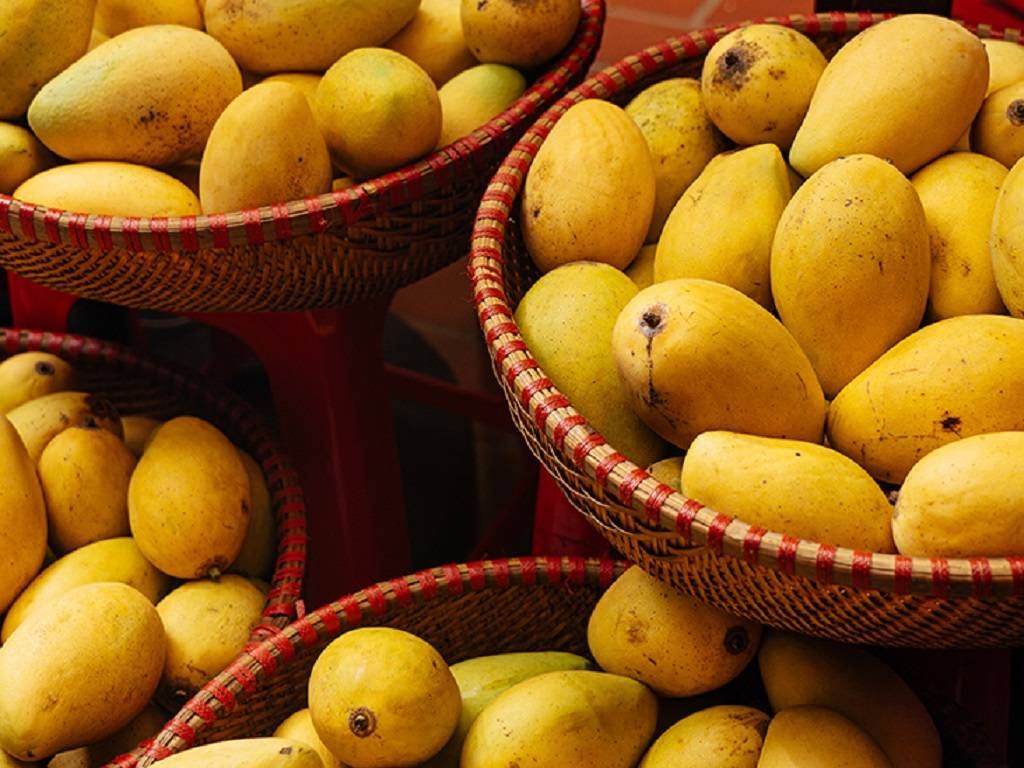
Mango (Mangifera Indica) is the most ancient among all the tropical fruits and is believed to be originated in the Indo – Burma region of Eastern Asia. India is the major mango-producing country in the world with an annual production of 20.44 million tons from an area of one million hectares. Mango is eventually a tropical plant but endures a wide range of temperatures. It grows well under tropical and sub-tropical conditions.
Climate and Temperature:-
The mango flowers and fruits during winter, which is characterized by the absence of rainfall. Rainy weather during flowering causes extreme damage to mango as it adversely affects flowering and fruit set and increases the incidence of pests and bacterial or viral diseases. It grows where the temperature drops as low as 20C. And as high as 470C. However, it thrives best at temperatures around 280C. It grows well both in low (24 cm) and high (245 cm) rainfall areas. However, with an annual rainfall of around 75-80 cm, it can grow without irrigation.
Fertilizers:-
A young orchard is supplied with 10 kg FYM + 100 Kg Nitrogen (N) + 50 g Phosphorus (P2O5) + 100 g Potassium (K2O) per tree in the first year and it should be increased with age. The 12-year-old tree should get FYM + 1 Kg Nitrogen + 500 g P2O5 + 1000 g K2O. If irrigation is available, an additional dose of 500 g of Nitrogen is given in the month of February and March.
Irrigation:-
Newly planted grafts are irrigated at 3-4 days interval for 6 months, thereafter interval should be 8 – 10 days depending upon climate Irrigation interval of 10-15 days is adequate for 1-5-year-old plants. Forbearing trees, irrigation should not be given prior to flowering for 2-3 months as it promotes vegetative growth and reduces the crop. When the fruits have developed to the size of a marble, irrigation can be started and continued at weekly or fortnightly intervals. This helps to reduce fruit loss by dropping, promotes rapid fruit development, and early maturity, and improves quality. However, mango is mostly grown as a grain crop.
Harvesting:-
Mango fruits mature in 3-4 months from flowering, Fruit color changes from dark green to light green on maturity. Harvesting must be started during the early morning hours. Individual fruits are clipped with a 1.5-2.5 cm stalk using a mango harvester. Harvested fruits are kept in bags under shade. Underdeveloped, bruised, and infected fruits are sorted out and healthy fruits are graded into 2 – 3 grades depending upon color, shape, and size and packed in wooden or corrugated boxes.
Production in India:-
Mango is commercially cultivated in Andhra Pradesh, West Bengal, Karnataka, Kerala, Bihar, Uttar Pradesh, Uttarakhand, Punjab, Haryana, Maharashtra, and Gujarat. Mango is cultivated over an area of 2309 thousand hectares with an annual production of 12750 thousand metric tonnes. In Punjab, mango is being cultivated in the whole of the sub-mountain belt comprising Gurdaspur, Hoshiarpur Roop Nagar, Fatehgarh Sahib, Mohali , and Patiala districts.











